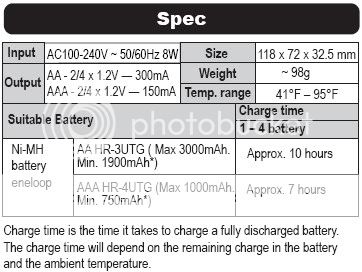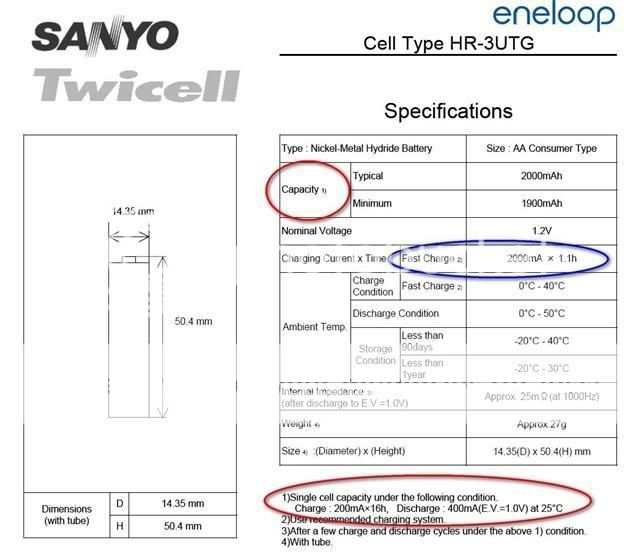I was under the impression best NiMH life was gained from shallow charges with periodic full dis-recharges.
From
Battery University:
[FONT=Verdana, Arial, Helvetica, sans-serif]
"Avoid too many full cycles because of wear."
[/FONT][FONT=Verdana, Arial, Helvetica, sans-serif]
"Do not discharge before each charge"[/FONT]
[FONT=Verdana, Arial, Helvetica, sans-serif]
"Discharge to 1V/cell every 3 months to prevent memory"[/FONT]
I am not saying you are wrong Mr Happy, you seem to know alot about batteries and charge methods and I really appreciate your input on this thread. It just seems what you and Battery University say is contradictory

The advice quoted from Battery University is not wrong. However, as with many kinds of advice, it is difficult to give advice that is general and understandable without simplifying some of the details.
Let's take them one by one:
Avoid too many full cycles because of wear.
The lifetime of a NiMH cell is measured in the number of charge cycles before the performance reduces unacceptably, but the number of charge cycles you will get varies a lot with charging conditions. If you charge a partially discharged cell, that might be considered "half a cycle" and thus good, but on the other hand chargers sometimes have trouble detecting the end of charge point if a cell is already partially charged before you start. So charging a nearly full cell could lead to overcharge, and that could be as damaging as a full charge cycle.
Do not discharge before each charge.
Generally speaking this is accurate because it is unnecessary to discharge first. It is very common for people to "top up" NiMH batteries before use. On the other hand, it won't particularly harm the batteries to discharge them first, and it might possibly be better for them by refreshing them and by avoiding the possibility of overcharge.
Discharge to 1V/cell every 3 months to prevent memory.
Even though it is not strictly necessary to discharge fully before charging every time, it is important to discharge fully at least some of the time. Every three months is a kind of average number, and might be more, or might be less, depending on your usage pattern.
What is the summary then?
Well the typical good lifetime of a modern NiMH cell is reckoned to be about 500 cycles. In adverse circumstances that could be reduced to 100 cycles or less.
Now if you get 500 full discharge/charge cycles, that corresponds to about 2 years of use with daily cycles, and about ten years of use with weekly cycles. If, like me, you have batteries in a digital camera that get recharged once every three months or so, the batteries will outlast you.
So the short answer is that unless you are a particularly heavy user you are likely to lose or dispose of your batteries for other reasons before you use up their cycle life. Therefore it is easy to over think the effect of full discharges on battery life.



